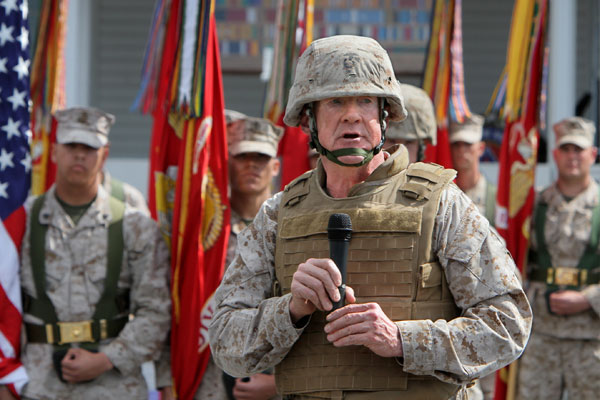In a rare, open moment for a senior cyber official, Marine Lieutenant General Richard P. Mills recently discussed cyber operations that can only be labeled tactical and offensive. Given the ongoing debate about any cyber operations beyond pure defense (even so-called “active defense” is seen by some as a non-starter), this was a surprise. The fact that it came in a tactical context was even more interesting, because in Washington, few ever think of cyber in anything but high-level strategic terms.
Lt. Gen. Mills told a tech-savvy audience that as a commander, he used cyber operations against the enemy “with great effect.” His description covered all three of the aspects of cyber warfare used doctrinally by the military: Computer network exploitation (CNE)—espionage, computer network attack (CNA)—offense, and computer network defense (CND)—defense. He was quoted as saying, “I was able to get inside his nets (CNE), infect his command and control (CNA), and in fact defend myself against his almost constant incursions to get inside my wire (CND), to affect my operations.”
While none of this was secret, there have been few—if any—admissions that such ongoing operations have been taking place, and even fewer mentions of it in connection to tactical operations in the war zone. It is gratifying to know that U.S. Forces are utilizing all the means at their disposal to combat a capable and determined enemy. Clearly, no one has told the Taliban and al-Qaeda in Afghanistan that the war is over—even though Administration officials are quick to say it.
It is also good to know that the Pentagon is not waiting around for the political debate in Washington to finish before moving ahead with the development of cyber capabilities on all levels. This is not just about a catastrophic attack on the entire U.S. electrical grid, or a foreign nation-state taking control of the U.S. nuclear command and control system. There are relevant cyber applications on every level of warfare, and they must be developed, deployed, and used to the maximum extent possible. The full power of American innovation, on an industry-wide level and by individual military personnel, must be leveraged to protect our assets and to counteract those of the adversary.
The motivation for Lt. Gen Mills’ remarks is unclear, but frankly, the response should be a hearty “well done” to the general and to all his troops. It is gratifying to see progress in what is becoming a crucial aspect of military conflict.






























